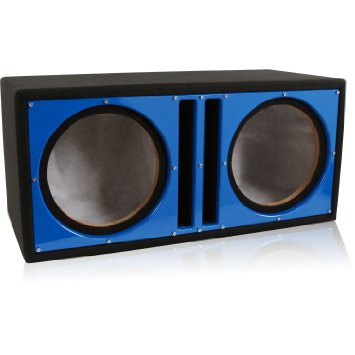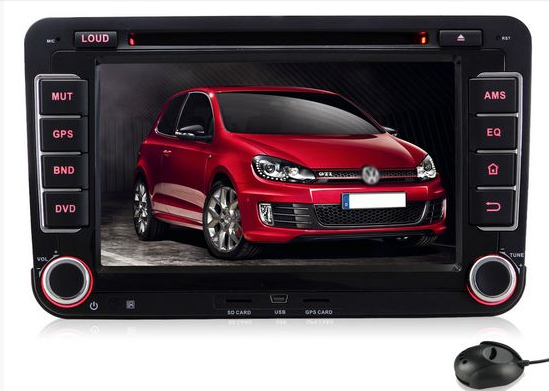By Dave Delamere
Getting a handle on all those wires
While they can look like some sort of multicolor pasta dish, wiring harnesses help you connect your new Android car stereo to your vehicle’s wiring. In this article, we’ll explain the different types of harnesses and adapters and how they’re helpful when installing your new car stereo.
Car stereo wiring harnesses
Each vehicle has a different wiring story. Sometimes you have a choice of harnesses that will work in your car. Other times, you might need more than one harness to complete the installation.
![}M6ZLGK@(O7)O)RTCW8E]7X](https://blog.autopumpkin.com/wp-content/uploads/2015/06/M6ZLGK@O7ORTCW8E7X.png)
The basic wiring harness
These represent the most common type of wiring harnesses. They offer connections for the power and speaker wires. They can also include connections for the new stereo’s ground and illumination wires.
Using the wiring code the adapter manufacturer supplies, these harnesses enable you to match up the wires for each connection to the new stereo’s wiring harness. Once that’s done, you plug the other end of the harness into your car’s wiring connector (the one that was plugged into the factory radio).
Specialized wiring harnesses
Vehicle audio systems, electrical systems, and convenience features have come a long way. So, the harnesses had to evolve to handle the complex wiring and data information that modern cars use.
Connections at a distant location
In some vehicles, you need to plug in the harness somewhere other than behind the radio. A great example is a common version of the Ford Taurus, where the factory amp and radio tuner are located in the vehicle’s trunk. These harnesses often consist of a basic wiring scheme that has wires long enough to reach the necessary destination. In the case of the Taurus, the adapter includes 20′ of speaker wire to reach the trunk.
Hook up your new radio by bypassing the factory amp
A vehicle’s stereo system sometimes has a separate amplifier, and when installing a new receiver, you generally need to connect the new Bluetooth car stereo‘s speaker wires to the factory amp’s output section. These amp bypass harnesses allow you to use the power from the new car stereo to drive your speakers and not rely on factory power.
These harnesses tend to be more affordable than amplifier integration adapters (below), but can involve more work if the amplifier is in a remote location, like under a seat or in the trunk.
![7D$ZTKV@T]CBVMVPT1E$UD6](https://blog.autopumpkin.com/wp-content/uploads/2015/06/7DZTKV@TCBVMVPT1EUD6.png)
Keep the factory amp in play
Many wiring harnesses can let you keep your vehicle’s factory amplifier when replacing the stock radio. They include connections that directly tie the outputs of your new car stereo into the factory amplifier’s inputs. So, you’ll be using the factory power for your speakers, instead of the power from your new radio.
These harnesses can sometimes shorten the installation time, since wires often do not have to be run to the factory amplifier location, but they tend to be more expensive than the bypass harnesses above. You may also see a module connected in these harnesses — they include adjustments that enable you to properly integrate your stereo’s speaker outputs and the factory amp’s inputs to keep your music clear.
Retain those important audible safety alerts
In many vehicles, the audible safety alerts are integrated into the factory radio. When you replace that radio, these warning sounds are lost, and that’s dangerous. Thus, these vehicles require a special harness to keep these audible tones working when you install a new stereo. Fortunately, these harnesses also take care of all of the basic stereo connections.
Hang on to factory conveniences you love
Today’s cars include an ever-growing number of features built into the factory radios, which complicate wiring connections immensely. They can include things like Ford SYNC®, GM OnStar®, Chrysler Uconnect®, and steering wheel audio controls for the stereo and your phone.
When you replace the factory radio in these vehicles, a more-robust type of integration adapters is needed in order to have these features work with your new stereo.
Some integration adapters, like the iDatalink Maestro, even enable you to download programming for specific receivers and vehicles so you can keep as much of the factory functionality as possible.

Packages that connect and secure your radio
There are also vehicles that not only have a complicated wiring scheme, but they also have a unique dash layout. Integration adapters for these vehicles include both the wiring connections and a custom dash kit to get your new receiver installed.
These generally include just about everything you need to get the receiver connected, mounted in the dash, and retain many of beneficial factory features, such as electronic climate controls.
Additional adapters for car stereo installations
Sometimes, a wiring harness won’t take care of everything and you need additional adapters to install a new stereo. They can help with a specific connection or allow you to keep a factory feature.
Antenna adapters
Many factory AM/FM antenna connectors simply plug into the antenna port on the rear of a new receiver. However, some vehicles have an antenna connector with a different shape or are part of an amplified antenna system. In these cases, an antenna adapter becomes necessary for your radio installation so you can keep your AM/FM stations playing.
Steering wheel audio control adapters
Modern vehicles often include steering wheel controls to let you safely operate your factory audio system without taking your hands off the wheel. These functions include volume controls, track forward/back, and hands-free calling controls. In most cases, those controls won’t work after replacing the factory radio. Thankfully, steering wheel control adapters help integrate these controls with many new stereos, so you can keep using these handy controls with your new stereo. Besides, there are many aftermarket products like Pumpkin car stereo support steering wheel control function.
![5FUM1$0)]OIAO)@{S{9Y7M0](https://blog.autopumpkin.com/wp-content/uploads/2015/06/5FUM10OIAO@S9Y7M0.png)
Speaker wiring harnesses
While they don’t directly help with car stereo installations, the speaker wiring harnesses we offer let you use the factory speaker wires for your new speakers, just like car stereo harnesses. Their plugs match the factory speaker wiring plugs in the vehicle, and the other ends slide over the new speakers’ terminals. That way, you don’t have to run new wire from the radio to all the speaker locations in your vehicle or cut factory wires.
First published in Crutchfield.com












![}M6ZLGK@(O7)O)RTCW8E]7X](https://blog.autopumpkin.com/wp-content/uploads/2015/06/M6ZLGK@O7ORTCW8E7X.png)
![7D$ZTKV@T]CBVMVPT1E$UD6](https://blog.autopumpkin.com/wp-content/uploads/2015/06/7DZTKV@TCBVMVPT1EUD6.png)

![5FUM1$0)]OIAO)@{S{9Y7M0](https://blog.autopumpkin.com/wp-content/uploads/2015/06/5FUM10OIAO@S9Y7M0.png)